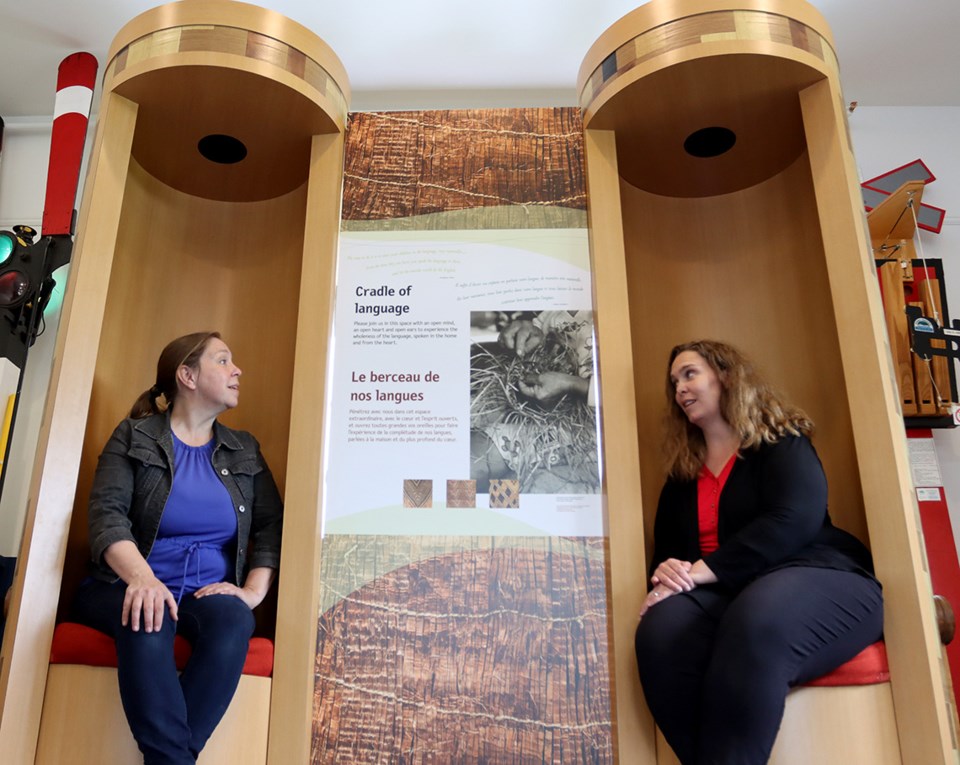British Columbia’s 203 First Nations speak 34 distinct languages.
Several exist only orally and as elders who know them pass away, they’re at risk of disappearing entirely. A few already have.
The effort to ensure Indigenous languages survive and even flourish is the subject of a travelling exhibit from the Royal BC Museum that’s being featured at Port Moody Station Museum from June 1 to Sept. 10.
The exhibit, entitled Our Living Languages First Peoples’ Voices in BC, is comprised of information panels and interactive stations that tell the history of those languages, the threats to their continued existence and the work that’s being done to document them so they can be passed on to future generations.
Language is a vital component of First Nations’ culture, said Kate Kerr, coordinator of the travelling exhibit.
“Language is unifying,” she said. “It gives you a sense of history and a sense of place.”
But colonial pressures like assimilation, residential schools and even diseases such as smallpox and measles that were introduced to Indigenous communities by white settlers have diminished many First Nations’ languages, undermining their culture.
Bringing those languages back to life has been a bit of a hodgepodge effort over the years, championed by dedicated researchers making audio and video recordings of conversations with elders. Digitizing those tapes has been an ongoing project at Royal BC, Kerr said.
The work is also important to reconciliation, she added.
Language can help build bridges to empathy and awareness, Kerr said. Witness recent initiatives to resurrect Indigenous names for places like Belcarra Regional Park, now təmtəmíxʷtən in the language of the Tsleil-Waututh, or səmiq̓wəʔelə, the Kwikwetlem title for the Riverview lands in Coquitlam.
Brianne Egeto, the manager/curator at Station Museum, said she reached out to learn about the language program that the Tsleil-Waututh community is doing.
“The Port Moody Heritage Society is committed to taking steps towards reconciliation,” she said. “We hope this exhibit will get people wanting to learn more about all the other initiatives taking place within the communities.”
Kerr said the display has the potential to open the ears and hearts of visitors, especially when they take a seat in the specially-constructed “cradleboard theatre” that envelopes listeners in recordings of conversations in Indigenous languages, many of them with children.
The effect is intentional, she said, as a cradleboard is a portable carrier woven or built of wood that is used by many First Nations to transport infants in their first few months of life.
“It swaddles the listener,” Kerr said. “We want it to feel like a hug from a mother.”



